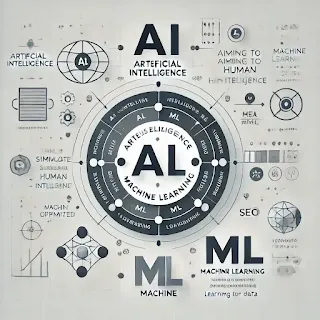Machine learning (ML) is a key component of artificial intelligence (AI), enabling computer systems to analyze data patterns and make informed decisions without explicit programming instructions. This technology has grown significantly, with applications in fields such as pathogen detection, predictive analytics, and real-time data processing, proving essential in modern problem-solving across various industries. This article provides an overview of what is a machine learning, its processes, and applications, highlighting why it is an indispensable tool in today’s technological landscape.
What is Machine Learning?
Machine learning is a subset of AI that focuses on creating systems that can identify patterns and improve their decision-making abilities based on data. Unlike traditional programming, where rules and logic are predefined, machine learning enables systems to adapt and learn from past data. This adaptability makes machine learning particularly valuable in fields requiring analysis of complex datasets, as it allows machines to operate autonomously, discovering insights from high-dimensional data that would be challenging to analyze manually.
Machine learning, often referred to as learning machine, relies on datasets to “train” algorithms that process and interpret data in a way that mimics human reasoning, though without explicit coding for each scenario. As a result, machine learning provides flexible solutions across applications, adapting to different data structures and complexities.
AI vs Machine Learning
The distinction between AI vs machine learning lies in their scopes: AI represents the broader concept of computers performing tasks traditionally associated with human intelligence, such as visual recognition or natural language processing. On the other hand, machine learning is the specific subset that allows systems to improve autonomously through data analysis. This makes artificial intelligence vs machine learning an overarching versus targeted comparison. While AI can be rule-based and programmed for specific tasks, machine learning uniquely allows computers to “learn” by extracting patterns from data, especially valuable in dynamic and data-rich environments like healthcare and environmental monitoring.
Applications of Machine Learning
Machine learning has revolutionized various industries by providing robust tools for data analysis and decision-making. Some key applications include:
Pathogen Detection: In public health, machine learning assists in the detection of harmful pathogens. Algorithms trained on high-dimensional data from genomic sequencing and optical sensors can identify specific pathogen markers, enabling quick response times and enhancing food and water safety by identifying contamination threats.
Predictive Analytics: Machine learning models analyze large datasets to predict potential outbreaks of diseases, often linking environmental factors to health outcomes. These predictions enable proactive health measures, potentially curbing widespread outbreaks and minimizing health risks in at-risk populations.
Real-time Monitoring in Food Safety: Integrating machine learning with biosensors for real-time data analysis has accelerated the detection of foodborne pathogens, reducing wait times compared to traditional laboratory testing and providing a valuable tool in food safety.
Machine Learning Techniques
Machine learning employs various techniques to analyze and interpret data. These methods include Principal Component Analysis (PCA) for reducing data dimensionality, support vector machines (SVMs) for classification tasks, and decision trees for understanding data structures and patterns. Each technique is chosen based on data characteristics and desired outcomes, as the appropriate choice can significantly impact a model’s accuracy and its practical applicability.
Machine Learning in Real-time Applications
One of the strongest assets of machine learning is its capacity for real-time data analysis, providing timely responses to anomalies or trends. In pathogen detection, ML-powered biosensors enable immediate feedback on contamination, transforming food safety protocols and minimizing health risks associated with delayed pathogen identification. This real-time analysis provides reliable and quick results, optimizing response times in critical areas such as public health and food security.
Challenges and Future Directions
While machine learning offers a wealth of possibilities, it faces several challenges, particularly around data quality, algorithm accuracy, and interpretability. High-quality data is crucial for reliable results; however, many industries struggle to maintain clean and comprehensive datasets, potentially impacting model performance. Additionally, ensuring transparency in machine learning models—particularly complex ones like deep learning networks—is critical for industries that require interpretable results. As machine learning technology progresses, addressing these challenges will be key to advancing the field and unlocking new applications across diverse sectors.
Conclusión
En resumen, machine learning es un pilar dentro de artificial intelligence, ofreciendo la capacidad de aprender y mejorar a partir de datos sin instrucciones explícitas. Desde la detección de patógenos hasta el monitoreo en tiempo real, las aplicaciones de learning machine están revolucionando industrias clave, brindando soluciones avanzadas para problemas complejos. Aunque machine learning y AI enfrentan desafíos como la calidad de datos y la interpretación de modelos, su impacto en la tecnología moderna es innegable. El futuro de machine learning promete avances que continuarán optimizando procesos críticos y ampliando su alcance en campos emergentes.
Bibliografia
Onyeaka, H., et al. (2024, December). Advancing food security: The role of machine learning in pathogen detection. Applied Food Research, 4(2), 100532.


No hay comentarios:
Publicar un comentario